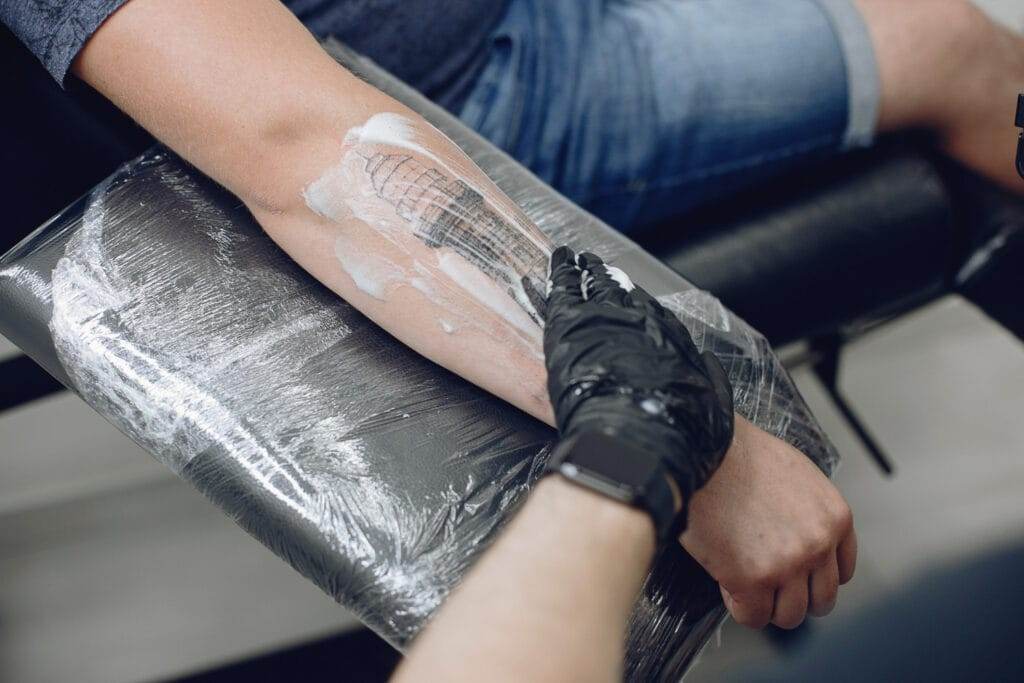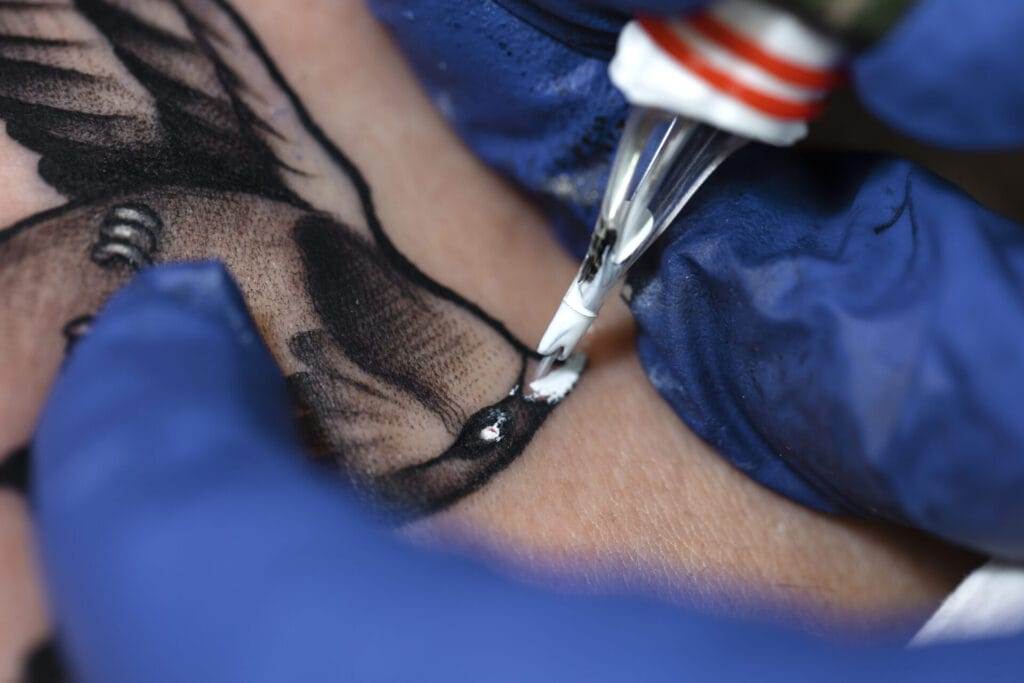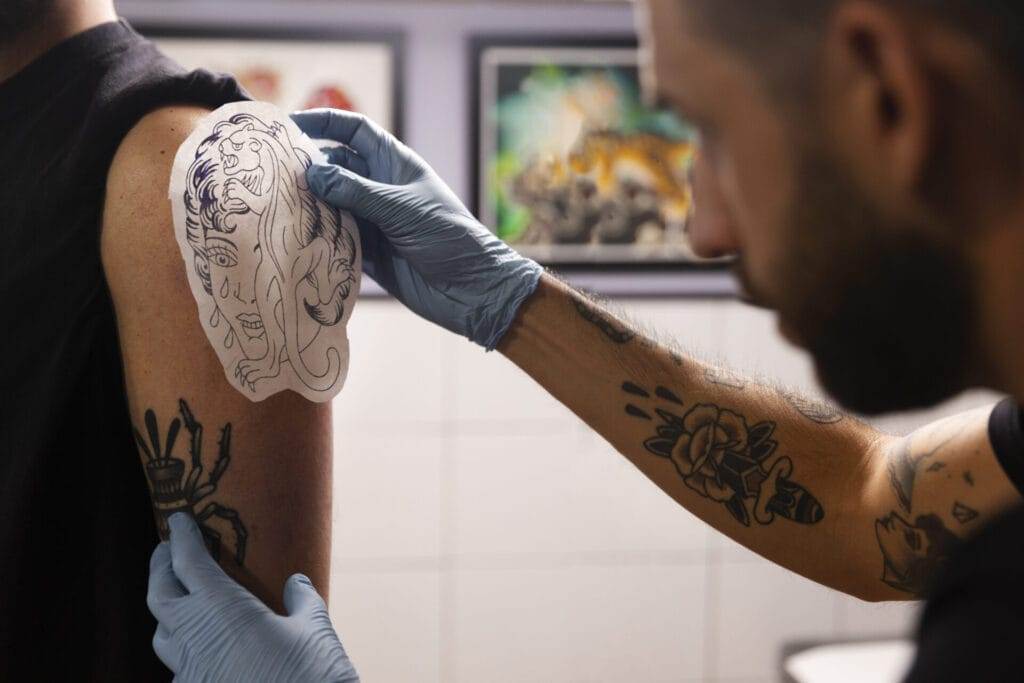The popularity of tattoos and the rise of tattoo regret
Tattoos have become increasingly popular in recent years, with many people choosing to express their individuality and personal style through body art. However, along with the growing popularity of tattoos, there has also been a rise in tattoo regret. Many individuals find themselves no longer satisfied with their tattoos due to changes in personal preferences, lifestyle, or even professional reasons.
Understanding the need for non laser tattoo removal
While traditional laser tattoo removal methods have been available for quite some time, there is a growing demand for non laser tattoo removal options. This is because laser tattoo removal can be expensive, time-consuming, and may cause adverse side effects such as scarring and skin discoloration. Additionally, certain tattoo colors are more difficult to remove with laser technology.
Non laser tattoo removal methods offer a safe and effective alternative for those looking to have their tattoos removed. These methods typically involve the use of creams, lotions, or chemical peels that gradually fade the tattoo over time. One popular non laser tattoo removal method is using tattoo removal creams that contain ingredients such as hydroquinone, glycolic acid, or kojic acid.
The benefits of non laser tattoo removal
There are several advantages to choosing non laser tattoo removal over traditional laser methods. These include:
- Affordability: Non laser tattoo removal methods are often more affordable than laser treatments, making them accessible to a wider range of individuals.
- Minimal discomfort: Non laser methods are generally less painful and cause minimal discomfort compared to laser tattoo removal.
- Reduced risk of side effects: Non laser tattoo removal methods have a lower risk of side effects such as scarring, blistering, or pigmentation changes.
- Suitability for all tattoo colors: Unlike laser technology, non laser methods can effectively fade tattoos of all colors, including stubborn shades like green and blue.
- Convenience and privacy: Non laser tattoo removal can be done in the privacy of one’s home, without the need for multiple clinic visits.
In conclusion, with the rise of tattoo regret, the demand for non laser tattoo removal options has increased. These methods provide an affordable, safe, and effective way to fade unwanted tattoos without the potential risks and complications associated with laser tattoo removal.
Non Laser Tattoo Removal Techniques
Chemical Tattoo Removal: Using acids to fade and remove tattoos
Chemical tattoo removal is a non laser method that involves the use of acids to fade and eventually remove tattoos. This technique often involves the application of tattoo removal creams or solutions that contain ingredients like hydroquinone, glycolic acid, or kojic acid. These acids work by breaking down the tattoo ink pigments, gradually fading the tattoo with repeated applications over time.
Some people prefer chemical tattoo removal because it is an affordable and convenient option that can be done at home. However, it is important to note that this method may not be suitable for everyone. Individuals with sensitive skin or those prone to allergies should exercise caution and consult a dermatologist before using any chemical tattoo removal products. It is also important to follow the instructions provided and be patient, as the fading process may take several months or longer.
Dermabrasion: Abrasive techniques to remove tattoo ink
Dermabrasion is another non laser tattoo removal technique that involves the removal of the top layers of skin using abrasive techniques. This process helps to physically grind away the tattoo ink particles, gradually revealing fresh, tattoo-free skin. Dermabrasion can be performed using various methods, including mechanical dermabrasion, which uses a rotating brush or diamond particles, or chemical dermabrasion, which uses a special chemical solution to remove the skin layers.

Dermabrasion is typically performed by a trained professional, such as a dermatologist or plastic surgeon, and may require multiple sessions to achieve the desired results. While this method can effectively remove tattoos, it is important to note that it can be more invasive than other non laser techniques and may cause discomfort, redness, and swelling during the healing process.
In conclusion, non laser tattoo removal techniques such as chemical tattoo removal and dermabrasion offer viable alternatives to traditional laser methods. These techniques provide individuals with the opportunity to fade and eventually remove unwanted tattoos in a safe and effective manner. However, it is important to consult with a medical professional to determine which technique is best suited for individual needs and to ensure proper application and aftercare.
Tattoo Removal Creams
How tattoo removal creams work
Tattoo removal creams are a non-laser method of removing tattoos that involve the application of creams or solutions containing specific ingredients. These creams typically contain acids, such as hydroquinone, glycolic acid, or kojic acid, which work by breaking down the tattoo ink pigments. As the creams are applied to the skin, the acids gradually fade the tattoo over time. The process usually requires repeated applications over several months or longer for visible results.
Effectiveness and considerations for using tattoo removal creams
For some individuals, tattoo removal creams are a more affordable and convenient alternative to laser tattoo removal. They can be used in the comfort of one’s own home and allow for gradual fading of the tattoo. However, it is important to note that the effectiveness of tattoo removal creams can vary depending on factors such as the size and color of the tattoo, as well as the individual’s skin type.
Individuals with sensitive skin or those prone to allergies should exercise caution and consult a dermatologist before using any tattoo removal creams. It is also important to follow the instructions provided and be patient, as the fading process can take time.
While tattoo removal creams may not completely remove tattoos, they can help fade them and make them less noticeable. However, for more significant and quicker results, laser tattoo removal or other professional methods may be necessary. It is recommended to consult with a medical professional to determine which method is best suited for individual needs and to ensure proper application and aftercare.
Tattoo Removal with Saline Solution
The process of tattoo removal with saline solution
Tattoo removal with saline solution is another option for those looking to remove unwanted tattoos. This method involves the injection of a saline solution into the skin, which works to gradually break down the tattoo ink. The process usually requires multiple sessions spaced several weeks apart, allowing the tattoo to fade over time.
Benefits and limitations of saline tattoo removal
Saline tattoo removal offers several benefits compared to other methods. Firstly, it is a non-laser method, making it a suitable option for people who are not candidates for laser treatment due to their skin type or tattoo color. Additionally, saline tattoo removal is generally more affordable compared to laser treatments.
However, it is important to note that saline tattoo removal may not be as effective in completely removing tattoos compared to laser treatments. The degree of success may depend on factors such as the size and color of the tattoo, as well as the individual’s skin. Additionally, the process can be lengthy, requiring multiple sessions spread out over several weeks or months.
It is crucial to consult with a professional and experienced technician before undergoing saline tattoo removal. They will be able to assess the tattoo and provide guidance on the expected results and any potential risks or side effects. It is also necessary to follow the recommended aftercare instructions to ensure proper healing and minimize complications.
In conclusion, tattoo removal with saline solution is an alternative method that can gradually fade tattoos over time. While it may not offer the same speed and effectiveness as laser treatments, it may be a more affordable and suitable option for certain individuals. Consulting with a professional is essential to determine the best course of action for tattoo removal based on individual circumstances.
Cryosurgery: Freezing Off Tattoos

The use of extreme cold temperatures to remove tattoos
Cryosurgery is another method used for tattoo removal, which involves the use of extreme cold temperatures to freeze and destroy the tattoo ink. During the procedure, a specialized tool is used to apply liquid nitrogen or another freezing agent directly onto the skin, effectively killing the tattooed cells. The body’s natural healing process then works to eliminate these dead cells and fade the tattoo over time.
Safety precautions and results of cryosurgery tattoo removal
Cryosurgery for tattoo removal has its own set of safety precautions and considerations. It is important to consult with a trained and experienced dermatologist or technician who can determine if this method is suitable for the specific tattoo and skin type. This is crucial as cryosurgery may not be as effective on certain colors and sizes of tattoos.
One advantage of cryosurgery is that it can be used on any skin type and tattoo color. However, it is important to note that multiple sessions may be required, just like other tattoo removal methods. The freezing process can be uncomfortable and may cause some pain or discomfort, but topical anesthesia can be used to minimize these sensations. After the procedure, proper aftercare is necessary to promote healing and minimize the risk of infection or other complications.
In terms of efficacy, cryosurgery has shown promising results in fading tattoos. However, complete removal may not always be possible. The outcome depends on various factors, including the size, location, depth, and colors of the tattoo. Additionally, the individual’s skin and healing capacity also play a role in the final results.
In conclusion, cryosurgery is a viable option for tattoo removal, using extreme cold temperatures to freeze and eliminate tattoo ink. It is important to consult with a qualified professional to determine if this method is suitable and to understand the expected results and potential risks. Proper aftercare is crucial for optimal healing and avoiding complications.









